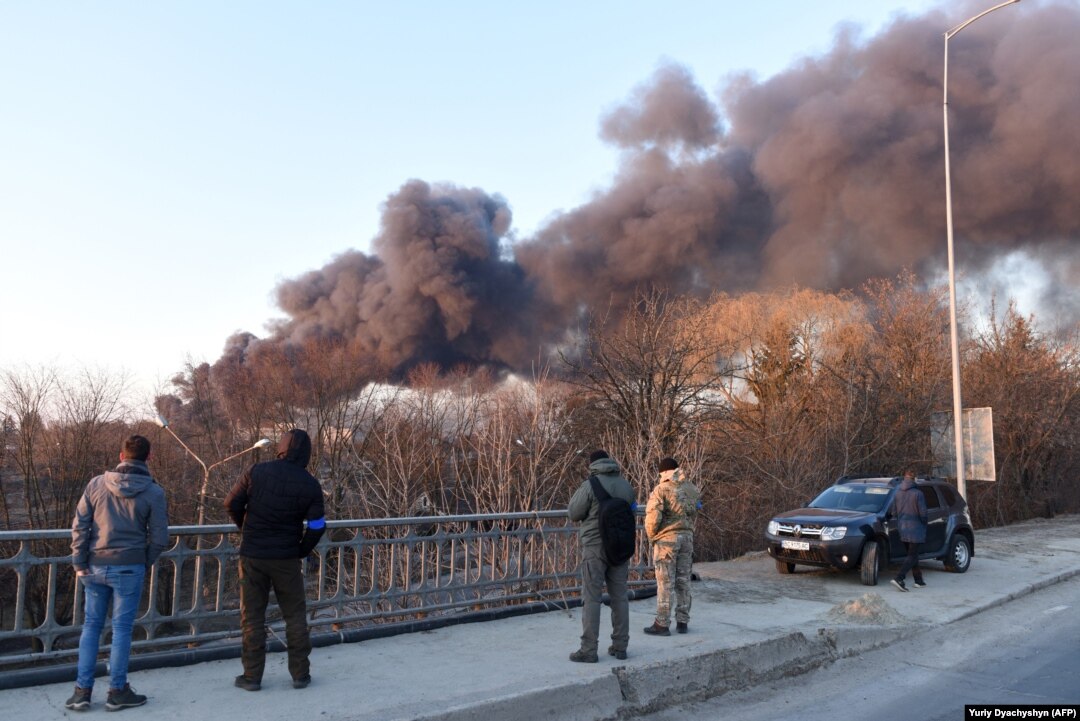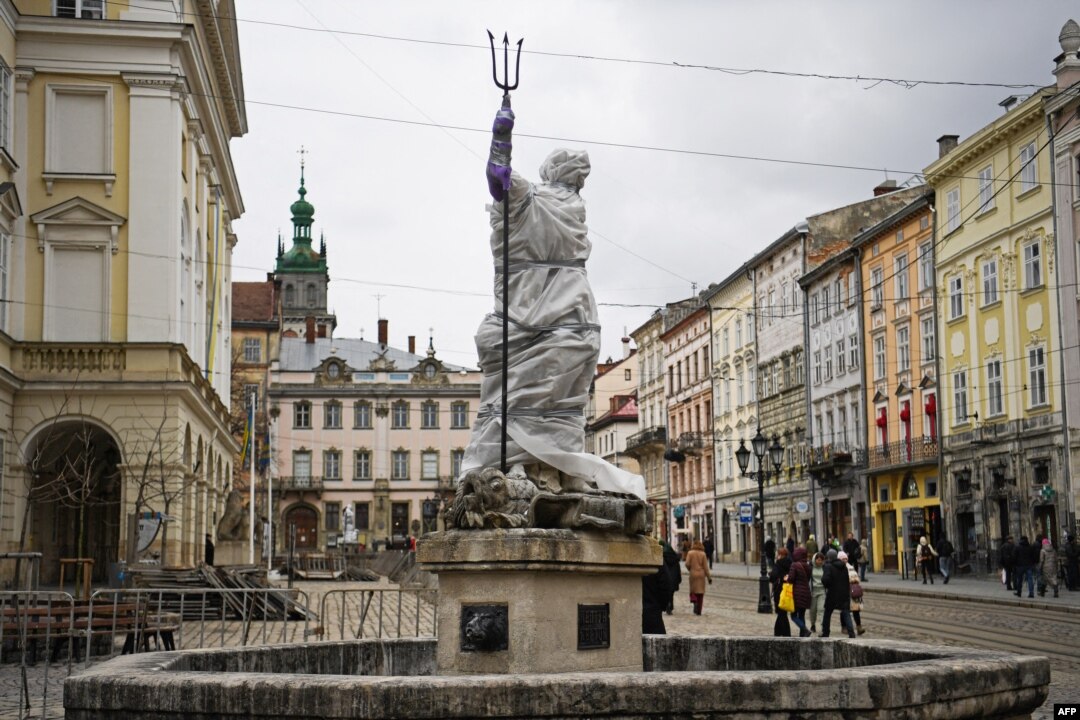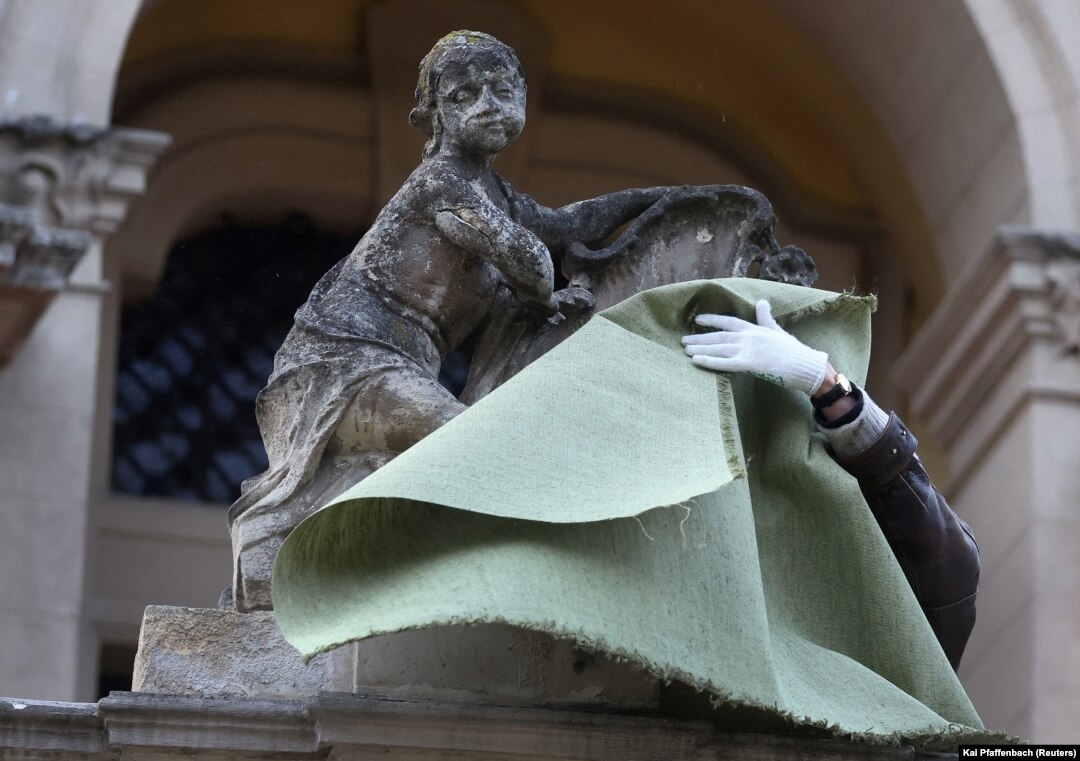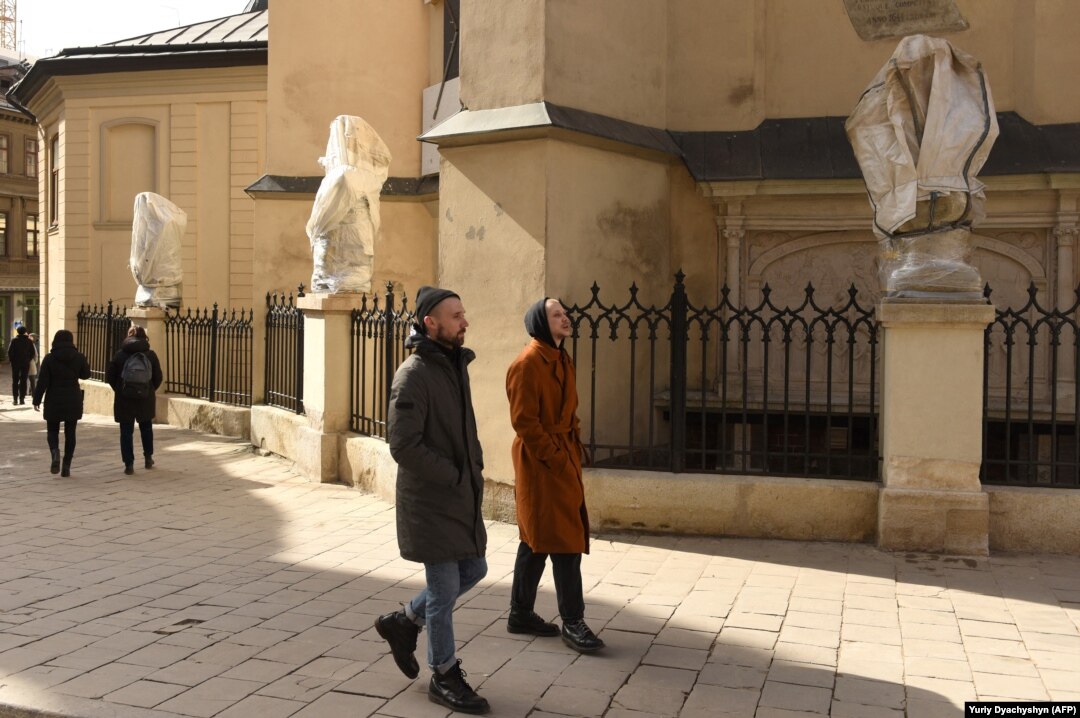Wrapping The Art Treasures Of Lviv

Smoke rises from an explosion in Lviv in western Ukraine on the morning of March 18 after several missiles struck an aircraft repair plant in the city, bringing the war closer to its historic, art-filled center.

A wrapped statue of Neptune in the center of Lviv.
In recent days, Lviv locals have been wrapping art treasures in the historic town center in an attempt to protect them from missile strikes, which many fear will be launched against the famously elegant city.

Volunteers wrap statues outside Lviv’s St. George's Cathedral.
Construction companies have loaned their scaffolding equipment free of charge to volunteers involved in the protection efforts, but according to Andriy Salyuk, who heads the Lviv branch of Ukraine’s Society for the Protection of Monuments, materials such as metal sheeting are now in short supply.

People walk past wrapped statues surrounding the 14th-century Latin Cathedral in Lviv.
Salyuk says experts from Croatia have been advising in the effort to protect Lviv’s monuments. The Croatians acquired extensive experience protecting art treasures during wars in the former Yugoslavia.
Men wrap a statue in the center of Lviv.
A local icon painter involved in the effort to safeguard the historic art of Lviv told RFE/RL’s Ukrainian Service that “if there is a direct hit from a missile, nothing will help.”
But such wrapping, which includes fireproof fabric, is an effort to protect Lviv’s treasures as much as possible from shrapnel and fire.
Volunteers erect a frame around a monument in Lviv.
Barriers such as this are intended to shelter monuments inside from shockwaves, which could topple statues without the physical impact of shrapnel, or debris from an explosion.
Metal sheeting covers some of the stained-glass windows of Lviv’s Latin Cathedral.
Polish specialists have also contributed to the protection efforts in Lviv, delivering materials to cover stained glass windows and other religious art.
Ukrainian servicemen walk past wrapped statues outside the Latin Cathedral.
Lilia Onyschenko, the head of the Lviv Department of Historic Environmental Protection, says the city is home to monuments “that represent the architecture of different periods, as well as different nationalities who have historically lived in Lviv, namely Armenians, Germans, Poles, Jews, and Ukrainians.”
An altar in a courtyard of the Armenian Cathedral of Lviv covered with metal sheeting.
“We are now protecting not just Ukrainian, but also the world’s heritage” Onyschenko said.

